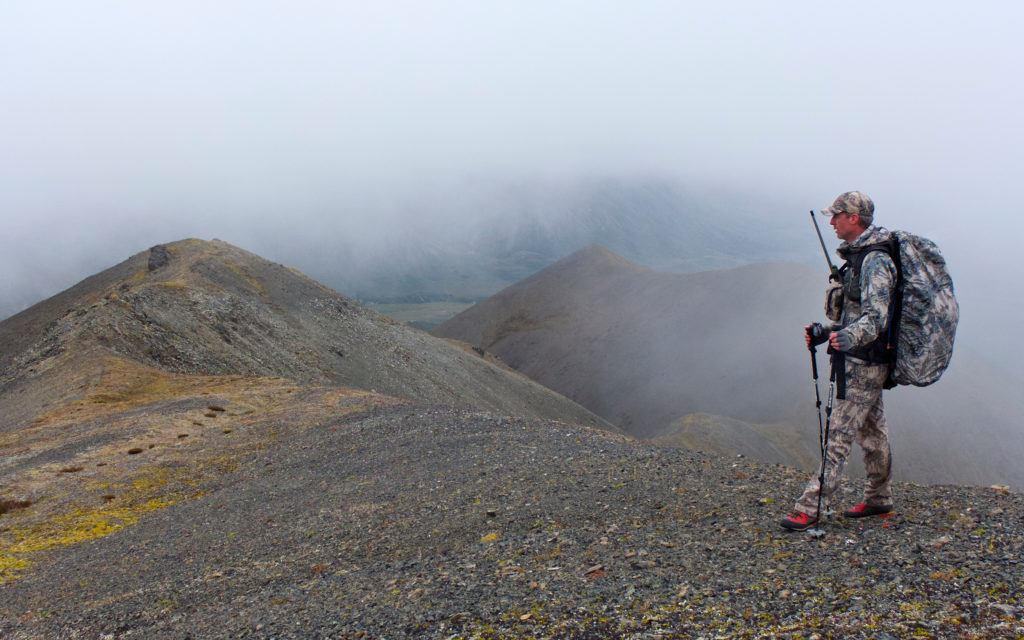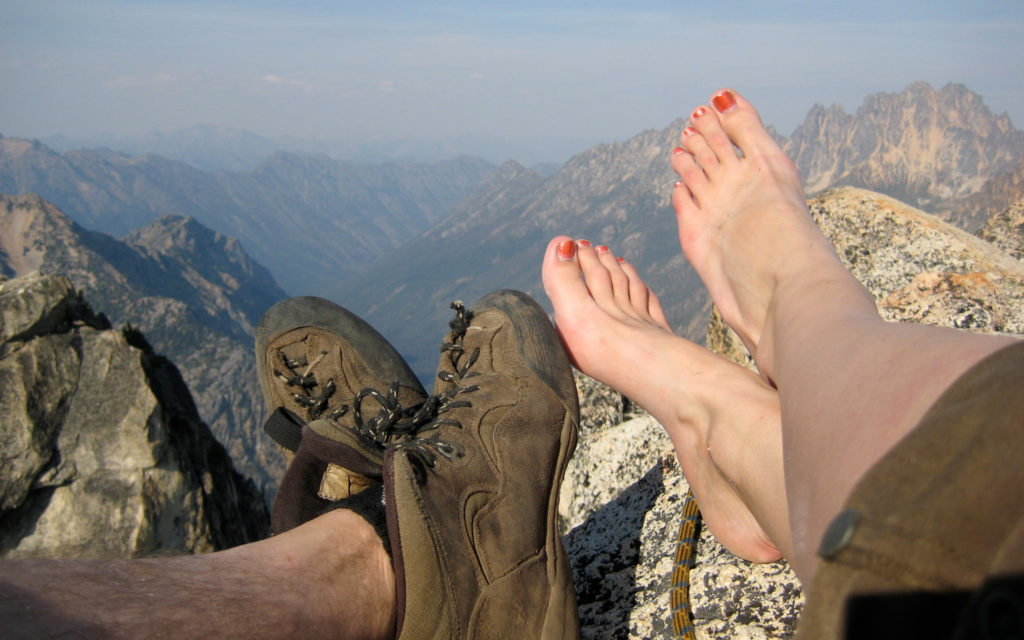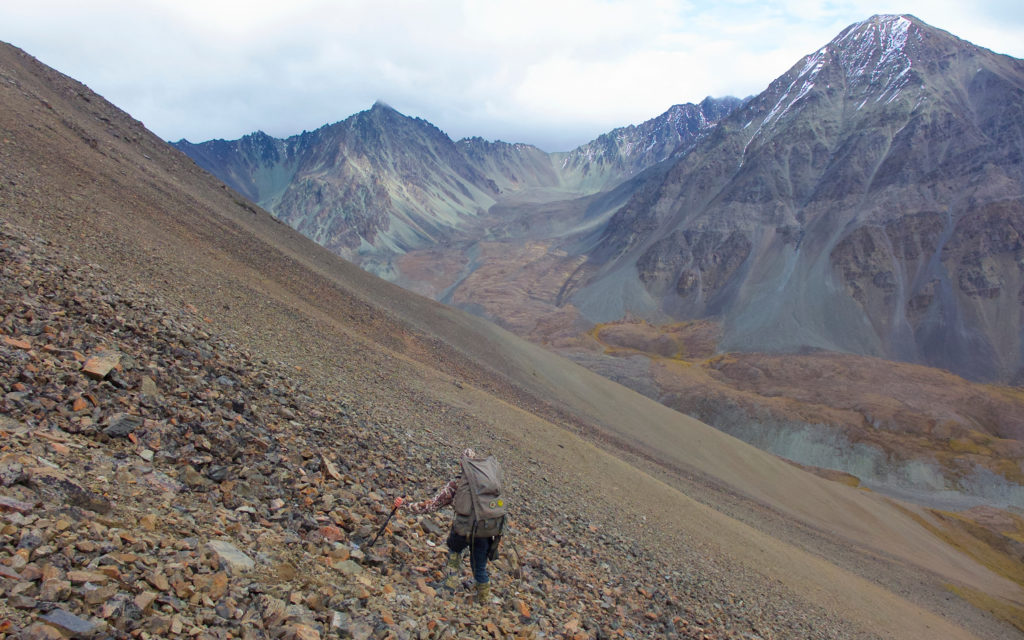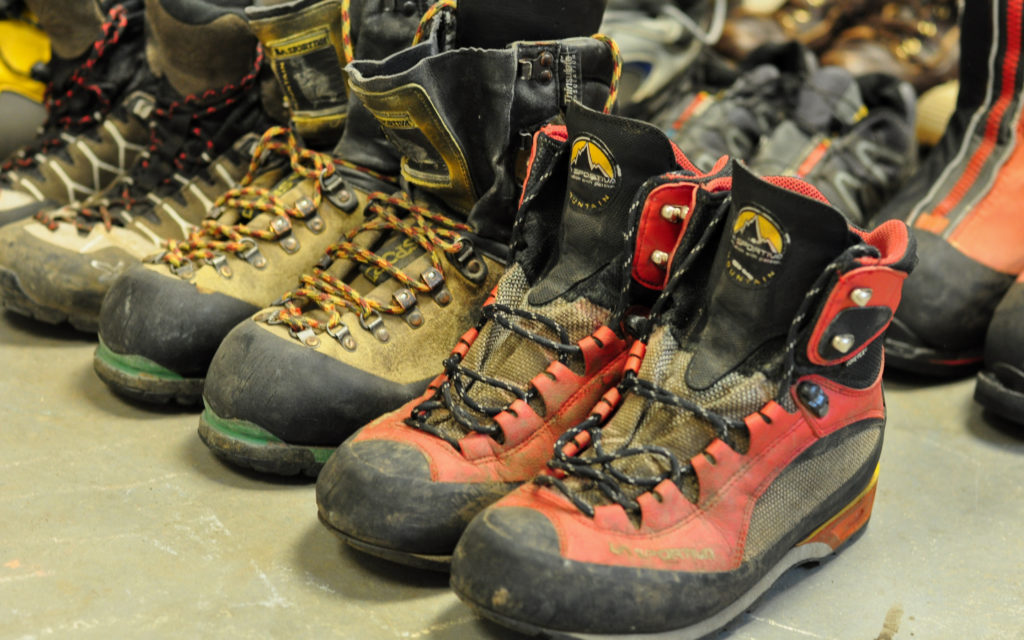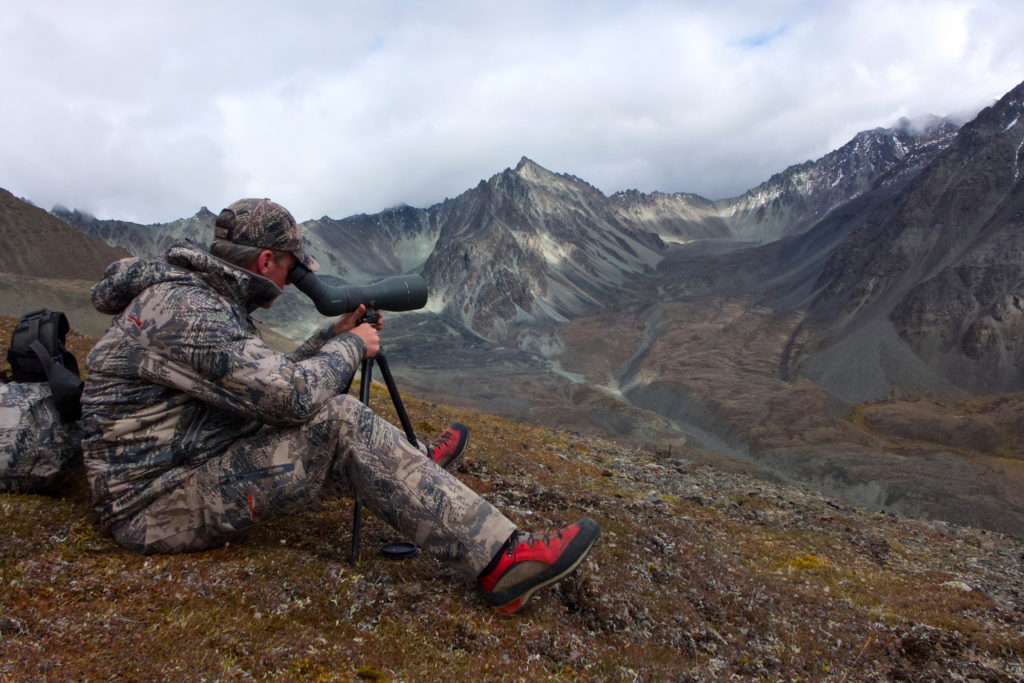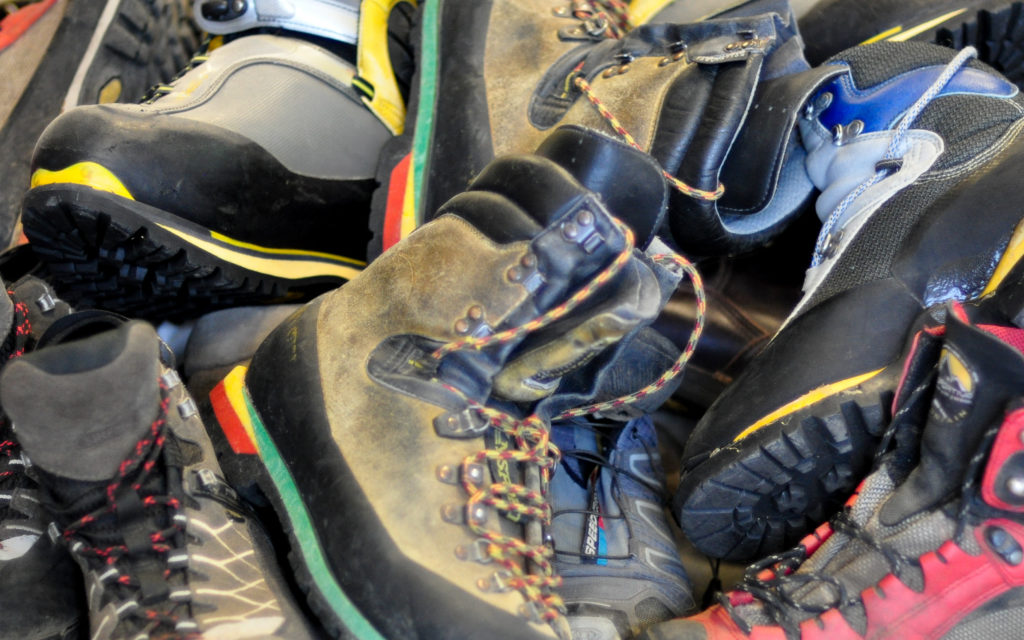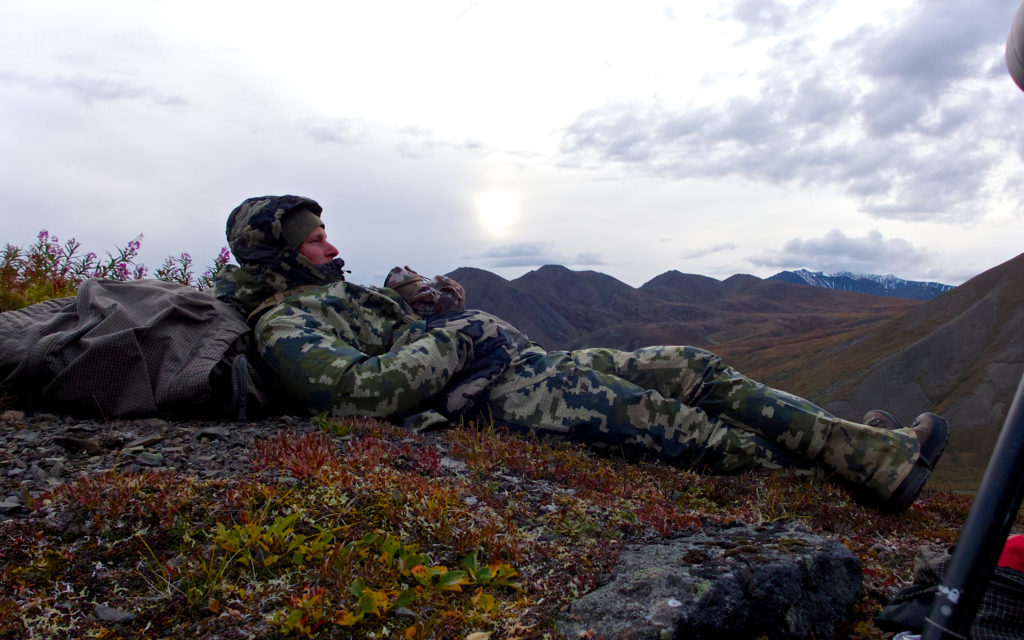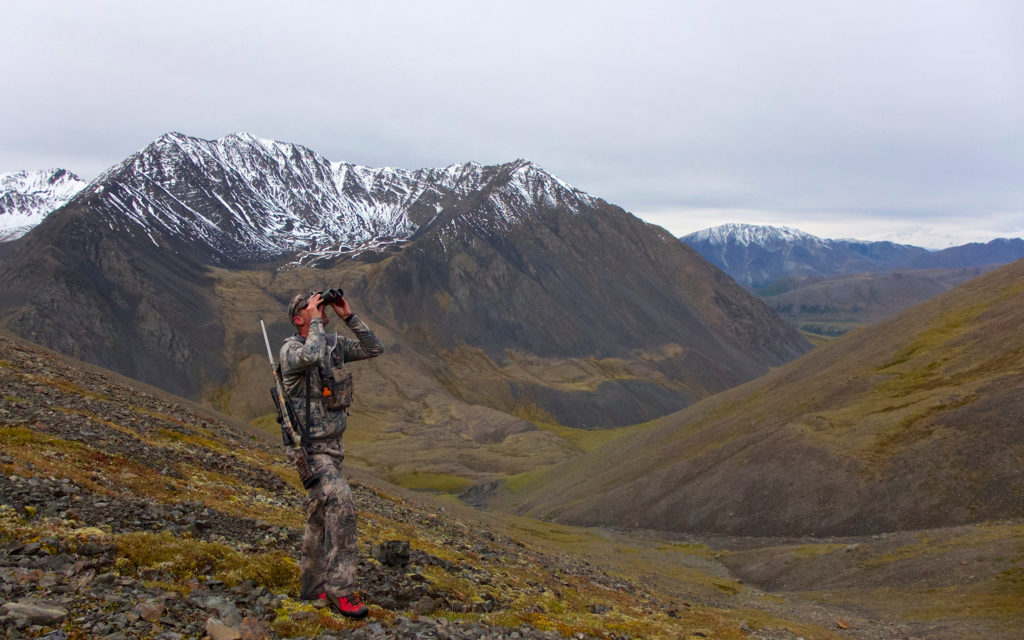If there is a more commonly debated and frequently agonized category of equipment in the realm of mountain hunting I don’t know what it is. In every pre-trip planning process, I feel like my partners and I almost always hold off asking the question as long as we can, perhaps out of some sort of embarrassment or fear of being perceived as ignorant or incompetent. We always get there eventually though because making a poor footwear choice is far worse than being thought of as an idiot or inexperienced.
The conversation typically unfolds in the following manner, one of us eventually works up the courage to float the question, “so what kind of boots are you bringing.” Typically this happens pretty late in the planning process, perhaps even as we are headed for the door. The response almost always contains more questions and thoughts as opposed to confident answers. We usually both breathe a sigh of relief and internally chide ourselves for having waited so long to have this important conversation. If nothing else it is nice to know that we are not alone in these struggles even if that doesn’t move us closer to a solution.
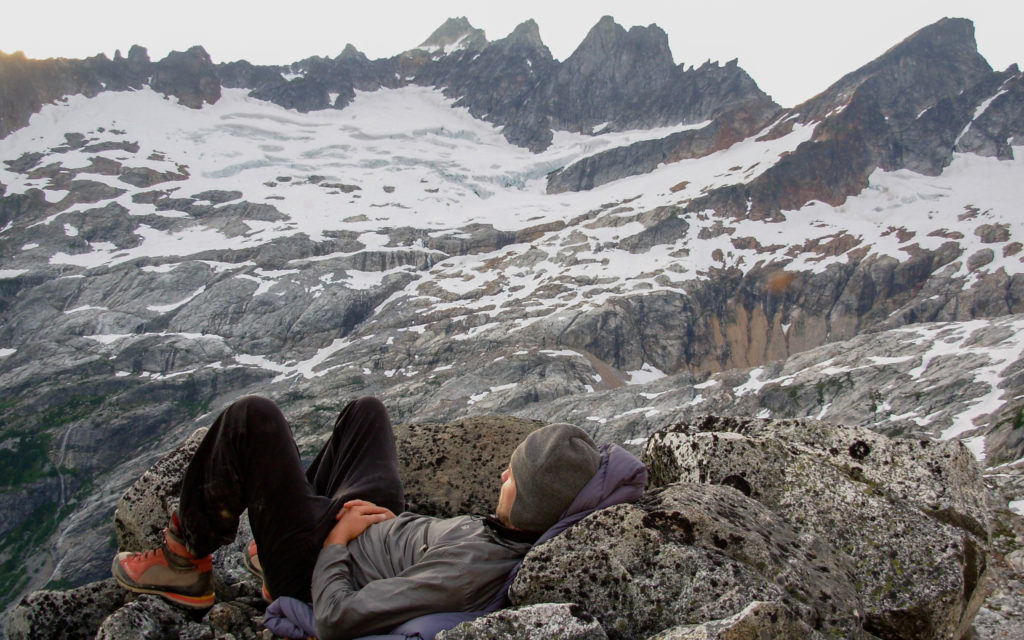
Footwear selection is a very complex and critical issue and one that we shouldn’t be embarrassed to struggle with or carefully consider. Proper footwear in the mountains means so much more than just a lack of comfort or, goodness forbid, style. Our lives can literally depend on whether or not our chosen boots are up to tasks we throw at them. Making an appropriate footwear choice not only has ties to comfort and function, choosing the right footwear is a huge life-safety issue as well.
As a long-time mountain guide, climbing instructor, and lifelong hunter, I have amassed what some might think is an obscene collection of footwear. The first step is admitting you have a problem… If I have learned anything from over twenty years of stomping around in the mountains it is that there is no such thing as one pair of boots that will truly do it all. I think at last count my mountain footwear collection included some thirty odd pairs of boots and shoes ranging from simple trail running shoes to high altitude mountaineering double-boots that cost well over a thousand dollars a pair. After eleven trips up and down the highest peak in North America in sub-zero temps, I still have all of my toes and have never had to turn around because of “bad feet.” Good boots are important. This is all true and relevant in the world of mountain hunting as well. The rest of our equipment is often quite specialized, and our approach to footwear should be no different, in fact, if there is anything we should tailor to a specific set of anticipated conditions it is our footwear.
I don’t intend the following to be an exhaustive dissertation on the best boot or shoe for a given application, but rather I want to share some concepts and food for thought when it comes to picking out a good mountain hunting boot, as well as a few general thoughts on things to consider when planning footwear for different types of trips.
Fit is Key
That much should be common sense, but I am often surprised at the number of people that show up for a mountain hunt or climb that have chosen ill-fitting footwear. It doesn’t matter how whiz-bang your boots are if your heels turn to hamburger and your shins are shredded an hour into a week-long backpack hunt. Take the time to find a pair of boots that fit you well, and then break them in, and/or break your feet into the boots. Every boot manufacturer uses a different set of lasts — the foot-shaped form that they build their boots around — and even within a given manufacturer’s line, there will be significant differences in lasts from model to model. Certainly, some generalizations can be made of most brands and the more brands of boots you try on the more you will start to get a feel for your foot shape in relation to different manufacturers lasts. Once I find a line of boots that fit well, I often stick with it trying to find makes and models within that line that fit my technical needs. In most major metro areas you can probably connect with someone at a running shop or pro shop that can recommend boot brands based on your foot size and shape. For those in more rural areas without easy access to a wide range, be prepared to order and return boots a handful of times in your search.
Mountain boots and technical footwear shouldn’t fit like most boots and shoes. These aren’t fuzzy bunny slippers after all. A good pair of mountain boots are Ferrari’s for your feet and should be sized and fit accordingly. Proper fit on a mountain boot should be snugger than most are used to. Your toes should have room to move, but not so much that there is slop or movement of your foot when the going gets steep. Your foot should be locked into these bad boys as even the slightest amount of heel slip, over time and rough miles will eat your heels for lunch. A good fit means optimal performance which means fewer things standing in the way of your successful hunt.
Consider the Application
Sometimes we make a footwear choice based on the majority of the intended use on an outing and choose to compromise on certain things that we are either less likely to encounter, or that will represent a small percentage of the use on the trip. Other times we may need to make a footwear choice based on a highly technical requirement that may only be a small percentage of the use on the trip, but compromising isn’t an option. Ice climbing for example. Perhaps we don’t want to walk ten miles to the base of an ice climb in stiff soled ice climbing boots, but our boots have to be step-in crampon compatible once we get to the ice. For the sake of the point, carrying two pairs boots isn’t practical. So in this example, we wind up slogging the trail in ice climbing boots that suck for that application because we need them for the objective that waits for us at the end. Perhaps that example isn’t overly relevant here, but hopefully, the point is made. There is such a thing as a mandatory screen out factor when choosing footwear.
Speaking of two pairs of footwear, this is a strategy I have often employed both as a hunter and a mountain climber. I carry two pairs of footwear on all of my backpack sheep hunts. On these hunts, I live out of a backpack for up to ten days and walk in excess of 100 miles with tens of thousands of feet of elevation gain. The thought of carrying an “extra” pair of shoes along on such a trip may seem preposterous to some, but to me, it is well worth it. A pair of foam Crocs come in pretty handy when crossing streams that would otherwise soak my mountain boots leading to blisters, heavy boots, and increased fatigue over time. The chance to escape my boots at the end of a long day allows my feet to rest and repair themselves and ultimately to more time I can spend on-the-go as the trip winds on. More time in the zone means a greater chance of achieving the objective of taking an animal home. When it comes to footwear strategy in the mountains, don’t be afraid to think outside of the box.
The ”Perfect” Mountain Hunting Boot
As comfortable as a pair of running shoes, will last a lifetime, look great at the bar, and cost $25. Right? If only that were the case. The reality is that many of the things that we ask of our boots in the mountains are at odds with each other. How can a boot both be stiff enough to edge well in steep terrain but be comfortable enough to wear for 20+ mile days under a big backpack? How can a boot both be light and extremely durable? The truth is, they can’t. The good news is that some come close, the bad news is that you are going to have to pay for that performance.
For most mountain hunts, we should be looking at a pair of boots that:
- are fairly friendly on the trail (read reasonably comfortable to hike in)
- can scramble and climb low angle rock fairly well
- are extremely durable
- are waterproof,
- have a reasonably stiff sole for side-hilling and snow walking,
- that have a technical fit (not sloppy)
- and that allows for both ankle support and articulation
Most boots that I have found that work well for all of these applications fall into what most boot manufacturers call a trekking or light mountaineering boot. Fall and winter shoulder season hunts where lower temperatures and prolonged exposure to snow travel can be expected probably necessitate a different class of boot. Something more insulated, stiffer soled, and higher in the ankle usually makes sense to me. Obviously warm weather and/or summer hunts may have a different set of considerations entirely. More on these things to follow.
At the outset, I probably should have mentioned a few things for context. I am a minimalist by nature. I hate extra weight, bulk, and carrying anything I don’t have to. I take painstaking care to try and eliminate everything that might not be essential to my health, well-being, or a desired level of functionality when living out of a backpack. One of my mountaineering mentors shared several lessons with me early in my climbing career and one of those was that “everything comes at a cost.” That is every decision you make typically has both a benefit and a cost. Everything you decide to carry comes with a plus and a minus. Every feature your chosen footwear may or may not have is both an advantage and a disadvantage depending on the application. When it comes to carrying camp on your back for days at a time, ounces equal pounds, and pounds equal pain.
Just Say No To Plastic
When I see a sheep hunter in the mountains here in Alaska wearing plastic mountaineering boots — it happens every year — I can’t help but shake my head. If at one point, or even now, you were this guy or gal, I mean no insult. You were probably given bad advice and/or you haven’t yet had the chance to experience what a good mountain hunting boot can feel like. Maybe you just hate yourself and are a glutton for punishment. If so, far be it from me to judge. There is certainly something to be said for doing things the hard way. Pain is weakness leaving the body after all.
Plastic double boots were designed for one thing, walking on snow. When compared even with fairly stiff-soled, full-shank mountain boots, they are atrocious on the trail and in any number of mountain applications like scrambling or side-hilling in steep terrain. Plastic boots are big, heavy, sloppy, hot, and not meant for anything other than slogging along on snow of varying degrees of steepness and accepting crampons. Don’t buy a pair of plastic boots for anything other than full-on winter snow travel or summer snow and glacier climbing. If your guide or trusted source of mountain hunting advice tells you anything different, I’d recommend shopping for some better advice.
So What Boots Are You Taking?
At this point, you might be wondering where all of this rambling is leading. I hesitate to make recommendations on specific brands, makes, and models for a number of reasons. The first was highlighted above in that fit is the most important thing. Everything else is secondary. Next, there are at least a dozen high-end, quality boot manufacturers out there that all kick out some really worthy mountain hunting footwear. I will share a few of my favorites as well as some other thoughts on different categories of footwear and intended uses. I should also preface these recommendations by saying although I am a member of several footwear brand pro-programs, I receive no benefits by endorsing any particular brands of footwear. This is the scoop according to me and is based on nothing other than personal preference and miles of experience. Take it all with a heavy dose of salt and/or flavoring of your choice.
All-Around Mountain Hunting Boots
My “one boot to rule them all” is the La Sportiva Trango Evo S — the current iteration of this model is the Trango Tower GTX. This has been my go-to trekking and moderate weather mountaineering and mountain hunting boot for more than a decade. I’ve probably put well over a thousand miles on my latest pair and they are still going strong. Comfortable on the trail, they work well with strap-on crampons, they have a tapered, technical toe with a sticky rubber Vibram sole for scrambling, and they are lightweight yet supportive. They are everything I want in an all-around boot. The Sportiva line is known for a low-volume and narrow last and some of their boots don’t work well for folks with “normal” feet. Quite a few other companies make boots I would lump into this category including the following:
- Scarpa R-Evolution Trek and Rebel K GTX
- Crispi Thor GTX
- Kayland Apex Rock
- Lowa Alpine Pro GTX
- La Sportiva Trango Cube GTX
All of these are world-class boots made by the best in the business, but they all fit very differently. Which one may or may not be best for you depends on your foot, or feet rather. Don’t forget to try on both boots, as your feet are often different sizes.
In looking at each of the boots above you will notice a few common features, that is things that separate these types of boots from others. Some of the characteristics of these modern mountain boots can include the following;
- Mid or ¾ height ankle. Allows for ankle support without reducing ankle articulation and movement. Important in “technical” terrain.
- High rubber rand protects the toe and sides of the boot from abrasion and wear while talus and scree scrambling. Provides additional grip and friction if climbing and scrambling steeper rock.
- Narrow toe box with laces that approach the end of the boot. Again allows for a tight, technical fit and eliminates slop and movement in the boot.
- Largely synthetic construction, not much leather. Modern synthetic materials are lighter, more durable, and quicker drying than leather.
- A soft but durable “sticky” rubber sole and moderately aggressive tread under the ball and heel of the boot. Many of the soles on these boots incorporate a smoother section under the big-toe that allows for better edging and smearing on rock. Vibram seems to be the sole of choice for most of these boots and for a good reason.
You can expect to pay between $300 and $400 for most of the boots in this category. That may seem like a lot, but you get what you pay for.
I see a lot of people wearing what I would classify as more of a hiking boot on mountain hunts, albeit they are often fairly heavy duty hiking boots. This class of boot is not a mountaineering boot and there are some very significant performance differences that could cause you grief in more technical terrain. As an example, last November two friends and I were on a late-season goat hunt here in Alaska. One of these partners was (and is) a good friend with little to no technical mountaineering experience. His hunting/hiking boots had served him well in the past chasing moose and caribou in the lowlands, but we were in goat country now. I had taken a nice billy the day before and we were now working to get my buddy into a position to get one of his own. We’d picked out an awesome animal on a distant ridge and spent most of the day busting our butts to get in position for a shot. We’d picked out a saddle in a ridge at the top of a long gully that I figured would put us about 150 yards from the billy. About 200 vertical feet below the saddle the terrain got steep and the gully was filled with frozen dirt and turf. My other partner and I had similar makes and models of moderate mountaineering boots on and were able to kick small edges into the frozen dirt enough to be able to comfortably edge our way across the frozen dirt and turf without issue. My partners hiking boots didn’t have the stiffness to kick or edge in this medium and though the ankle support was great, the boxy design of the boots didn’t allow him to stand comfortably in the small step. So that was it. End of the road and no billy because of footwear that wasn’t up for the task at hand. Simple as that. It was absolutely the right call not to push it because we were in “no fall” territory. The right boots made it safe to cross and the wrong boots, well, didn’t.
A few other thoughts on “other” strategies and footwear choices for different types of hunts and conditions.
Warm Weather Backpack Hunts: If I am going to be logging a lot of trail miles in warm temps without the possibility of having to cross snow or deal with prolonged wet conditions, nothing beats a good trail running or “approach” shoe. The Salomon Speedcross Mid and Five Ten Guide Almighty’s have served me well although the latter is out of production now. A true “approach” shoe will scramble well but be less comfortable on the trail. A true trail running shoe is awesome on the trail but doesn’t scramble well or deal with talus and scree super well. There are lots of makes and models out there that blend these two categories of shoes.
Cold Weather Mountain Hunts: Prolonged exposure to temps at or below freezing and extended travel on snow or high angle snow or ice necessitate something a little more serious than my Trango’s. Think Kodiak in November. In these conditions, I opt for Sportiva’s Nepal Evo. This is a full-on mountaineering boot with a full-height ankle, aggressive Vibram sole, full-length shank (read super stiff) and well insulated. These boots aren’t comfortable for long hikes, although I’ve put a ton of miles on mine. They do as well as any big, burly winter boot can while not compromising on technical performance and the needed insulation. For winter hunts that won’t involve any sort of higher angle terrain or the need for technical performance, I really like my Muckboot Stealths. Again not a pair of boots you’d want to march heavy loads around with for a week, but if warmth and comfort in winter conditions is the priority, they are a great solution.
Water crossings and Camp Shoes: I am not a fan of wet boots and will often go to silly lengths to avoid soaking mine. This distaste isn’t simply a “wet boots are yucky” kinda thing, but soaked footwear negatively affects foot health and fatigue, both of which are critical to stave off, especially on longer trips. For trips that might involve more significant water crossings or wet conditions, I’ve found a 10-ounce pair of slip-on Crocs to be worth their weight in gold.
Footwear is incredibly important in the back country, and there are lots of good options out there. Pick one that fits well and is designed for the type of use you anticipate. There are some key differences between hiking boots and mountain boots and when it comes to technical footwear, there are no insignificant details. When in doubt, ask a professional and/or defer to expertise. Finally, if you get serious about this mountain hunting thing, make some more room in your boot closet, you are going to need it.
Happy trails.


